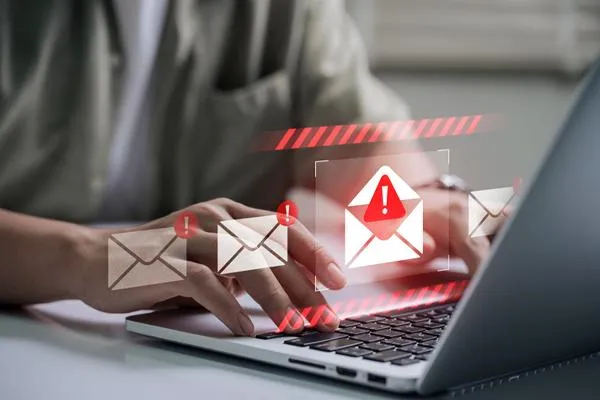
How to Spot a Fake Email in 10 Seconds
Fake emails are more convincing than ever in 2025, and one careless click can cost your business thousands. Phishing scams are evolving fast, often using AI-generated language and logos that look nearly identical to the real thing. But there are still quick, telltale signs that can expose even the most sophisticated scam. In this guide, cybersecurity expert Mike Wright teaches you how to spot a fake email in 10 seconds or less—before the damage is done. Learn what to look for, how to train your team, and what tools can protect you when your eyes miss the signs.
How to Spot a Fake Email in 10 Seconds or Less
Why Fake Emails Are So Dangerous Now
Phishing emails aren’t just full of typos and weird links anymore. Many use AI to copy writing styles, replicate logos, and insert believable sender names. These scams aren’t just smarter—they’re faster, and they’re hitting inboxes every day.
Why Fake Emails Work So Well
The psychology of phishing is rooted in urgency, authority, and distraction. Cybercriminals craft messages that seem to come from trusted brands, banks, or even coworkers—pressuring you to act fast without thinking it through. And with AI helping scammers mimic tone, design, and logos more convincingly than ever, fake emails are now almost indistinguishable from the real thing. One bad click can lead to data theft, ransomware, or massive wire fraud.
This type of manipulation is known as social engineering—learn more about how it works in this post on The Con Artist in Your Inbox.
The 10-Second Email Scan
1. Check the sender's address. Look beyond the display name. Is it from a weird domain? Gmail instead of a corporate domain?
2. Hover, don’t click. Hover over any links to see the real destination.
3. Look for urgency or fear. “Act now or lose access!” is a red flag.
4. Check for personalization. Does it use your name, company, or specific account details? Scams usually don’t.
5. Scan for grammar, logo blur, and inconsistent branding. These are classic signs of forgery.
Real-Life Example: The $1.9 Million Email Scam
In one of the most widely cited phishing attacks, an employee at Experi-Metal Inc. received a fraudulent email that appeared to come from their bank, Comerica. The email directed them to a fake site where they entered login credentials and a security token. Over the next 6.5 hours, cybercriminals initiated 93 wire transfers totaling $1.9 million.
The attack was swift and devastating—and all it took was one convincing email. This case illustrates just how easily even trusted employees can be tricked, and why phishing awareness is one of your most powerful lines of defense.
This kind of phishing isn’t random. It’s often made possible through services like Phishing-as-a-Service, which give criminals everything they need to run scams at scale. Here’s how it works.
How to Train Your Team
Hold monthly “Phish Drills” with fake test emails
Create a one-click “Report Phishing” button in your email system
Reward staff who catch scams early
Bonus: What to Do If You Clicked
Clicked something you shouldn’t have? Don’t panic—but do act fast:
Disconnect your device from the internet
Notify your IT team or provider immediately
Change passwords for the affected accounts
Run a full malware/virus scan
Report the phishing attempt to your email provider
The sooner you respond, the less damage is done.
Think phishing is only about emails? Scammers now use text messages to set up voice cloning attacks too. This post explains how.
Tools That Help
Microsoft Defender or Google Workspace security features
Email gateways like Proofpoint or Mimecast
DNS filtering and domain monitoring tools
Your Next Step?
Want customized phishing awareness training for your team? Book Mike Wright for a private session or keynote: security.guru/contact
